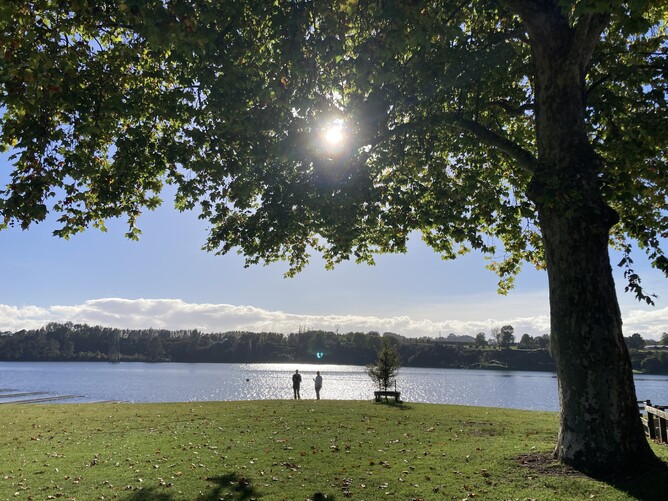The National Science Challenges are wrapping up in June this year, rounding out several years’ worth of research initiatives.
One of these Challenges, Our Land and Water | Toitū te Whenua, Toiora te Wai, has been hosting a series of regional engagement events to report on various aspects of the work. Healthy land and water are essential to a functional food system, so the opportunity to learn more about this research was great for the Kai Challenge.
I was able to get to the events at Karapiro and at Maramarua recently and have been super impressed with the breadth of topics covered. There were some particularly thought-provoking pieces of work that I wanted to share.
Pa to Plate by Paul Voight, Nikau Pacific Group
This work in Tai Tokerau Northland is a social enterprise that empowers communities. The project is focused on connecting Tai Tokerau descendants to their whenua using mātauranga to grow kai. They have four objectives:
Connect Tai Tokerau growers, farmers with each other.
Reconnect descendants with their land through food.
3. Re-establish Māori food-based economy around marae, papakāinga and whenua.
Develop a kin-market system based on sourcing, traceability and narratives.
5. Explore novel enterprise opportunities in customary resources (i.e. tuna, harakeke, fernroot).
In his presentation, Paul outlined how the project grew from research in 2016 to initial conversations in 2018, to now feeding whānau and selling produce locally. The scale of projects at different marae varies widely and they produce kai at different scales too. There are mechanisms in place for participating marae to share resources, and the project also works on food storage and preservation projects. In addition to feeding whānau, some marae are also selling their produce and products locally.
There is so much to learn from this work. I encourage you to take a look at their growers’ guide and keep an eye out for their kai too!
Data Supermarket – Warren King, AgResearch
Do you ever find neat data hidden on the internet and think, ‘I suspect this is awesome but I don’t quite know how to use it’? That was me and the Data Supermarket about 6 months ago, so I was delighted to have someone talk me through it. The point of this repository is to consider land use potential in Aotearoa New Zealand. Considering what is possible, our current land use is quite narrow. The data supermarket aims to give us some insights into what might be possible where. Not only that, but given what we know about our changing climate, the data in this repository can also support us to explore what might be possible down the line.
If you need someone to step you through it like I did, here’s a webinar you can check out. It’s not quite a substitute for the live version at Karapiro, but that did come with the added bonus of a morning coffee with this glorious vista. (main image)
Peri-Urban Potential by Shannon Davis, Lincoln University
Hearing about this work was a huge drawcard for me heading up to Maramarua, but unfortunately it was cancelled for health reasons. Instead, I went to take a look at this webinar. This work is based in Ōtatahui Christchurch, but has plenty of insights relevant to other cities in Aotearoa New Zealand. The research findings suggested that “urban New Zealanders are concerned at their lack of easy access to locally produced food and want to eat affordably food produced ‘over their back fence’.”
According to the research, there was a preference for “publicly accessible mixed-used greenbelt with food gardens, fruit trees, farmers markets and sports fields”. The research speaks directly to the perceived conflict between housing and food production, and challenges us to think about how these land uses, both essential, can co-exist and be mutually beneficial. This is super timely as I prepare my oral presentation to support our recent submission to the Hamilton City Council Long Term Plan.
Connecting Producers and Consumers by Robyn Kannemeyer, Manaaki Whenua Landcare Research
This research was related to the idea of a ‘social licence to farm’. I’ll be honest – this is not something I had ever considered before. Asking simple questions is truly my superpower, so I put on my cape* and asked ‘Do you need a social licence to farm?’. Then I thought about various protest movements by farmers globally, and the reactions these protests encounter, and I see the point: Something, somewhere, in the relationship between growers, producers and consumers has gone awry. The researchers described a social licence as as “an ‘unwritten social contract’ that reflects perceptions and expectations of the broader community”. On that basis, checking up on the social licence to farm makes sense.
Essentially, non-farmers need farmers to produce food, of course, but to do so in ways that are acceptable to them, to be ‘good farmers’. Farmers and non-farmers might not agree on what constitutes a ‘good farmer’. If improving relationships between growers, producers and consumers is part of improving food security, then exploring this relationship is super valuable. From their list of key takeaways for farmers, this one caught my attention: “Farmers being compliant with regulation and striving to improve profitability in the primary industry without sacrificing environmental gains could improve public perceptions of farmers.” Check out the rest on their webpage.
TL;DR
The National Science Challenge is wrapping up. They have produced some really valuable research and there are a few bits in particular that I would encourage you to take a look at:
Peri-Urban Potential – work on the fertile whenua surrounding cities in Aotearoa NZ
Data Supermarket – an interactive tool for exploring land use possibilities across Aotearoa now and in the future
Pā to Plate – a long term marae-based social enterprise food security programme in Northland
Connecting Producers and Consumers – thought-provoking research on the perceptions of farmers and non-farmers on what makes a ‘good farmer’
By Dr Amber Hammill.


